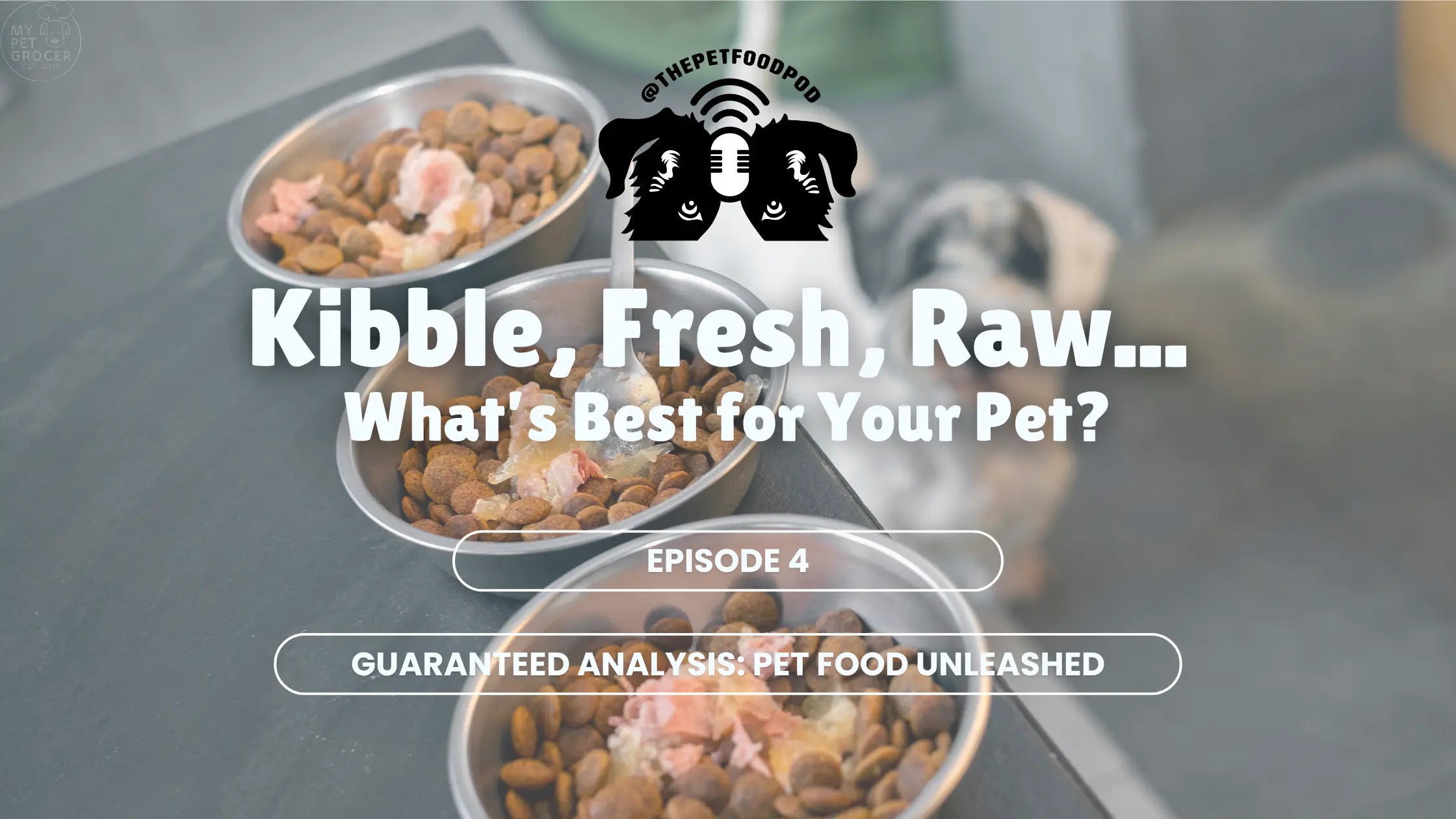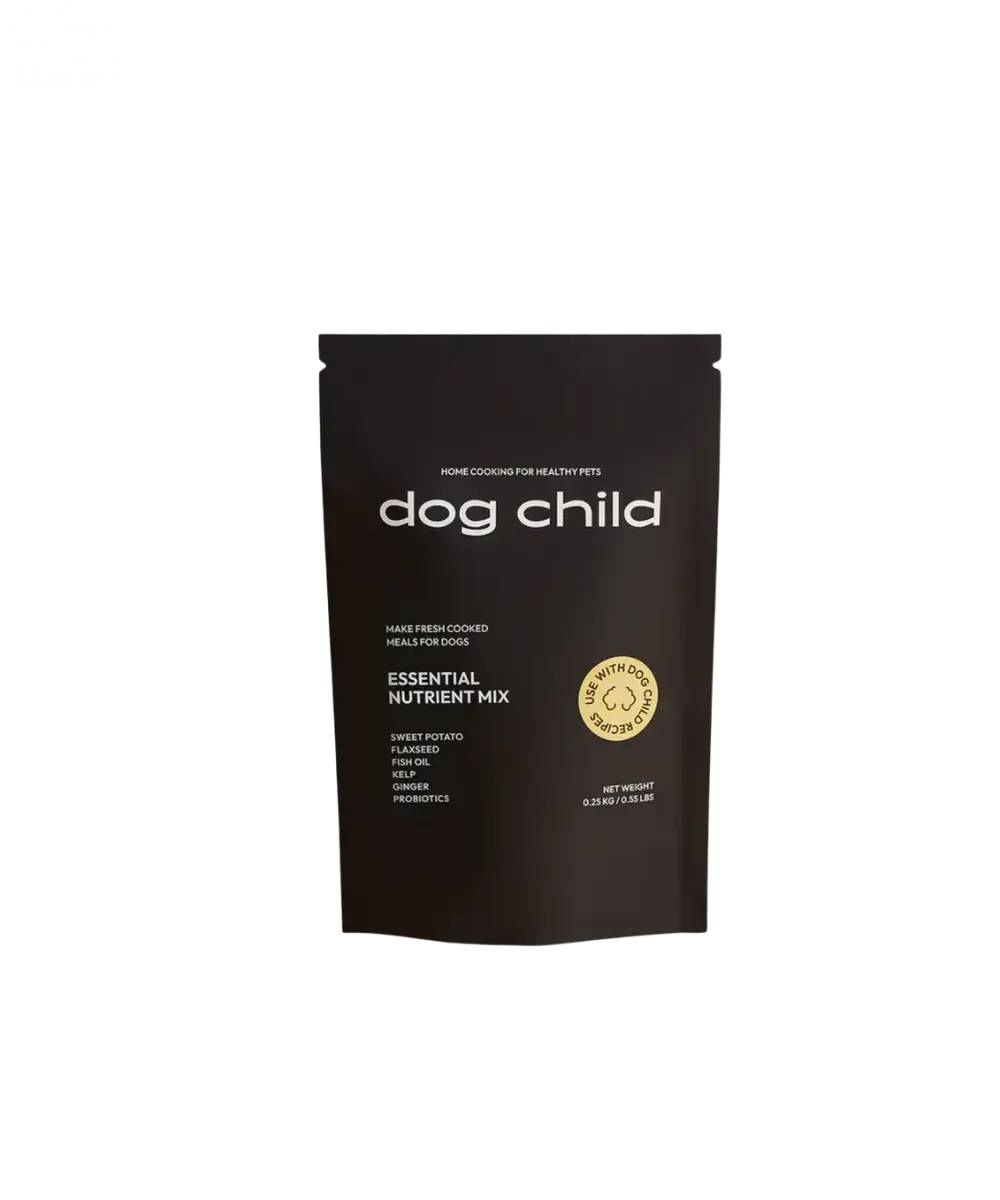
Kibble, Fresh, Raw… What’s Best for Your Pet?

When it comes to feeding our pets, the choices seem endless. Kibble, canned, fresh, homemade, raw — each has passionate advocates and strong opinions. But which is actually best?
In this blog, based on our latest Guaranteed Analysis: Pet Food Unleashed episode, we break down the pros and cons of different pet food categories to help you make the most informed decision for your furry companion.
The Two Big Categories of Pet Food
At a high level, pet food falls into two major categories:
-
Commercial Diets – These include kibble, canned food, and other mass-produced options formulated by large pet food companies.
-
Fresh & Homemade Diets – This includes fresh food (cooked or raw), homemade meals, and small-batch commercial fresh diets.
Within these categories, we see different philosophies on formulation:
-
Nutrient-Centric: Focuses on precise nutritional formulations based on scientific research.
-
Ingredient-Centric: Prioritizes whole-food ingredients over synthetic nutrients, emphasizing recognizable, minimally processed components.
Understanding these categories helps cut through the noise when choosing a diet that aligns with your pet’s needs.
Kibble: The Most Popular Option
Pros of Kibble
✔ Convenient & Shelf-Stable – Long-lasting, easy to store, and simple to serve.
✔ Cost-Effective – Generally more affordable than fresh or specialty diets.
✔ Scientifically Formulated – Many kibble brands follow strict research-backed nutritional guidelines.
✔ Therapeutic Options – Prescription kibbles can help manage conditions like kidney disease or allergies.
✔ Consistent Quality Control – Established brands invest in testing for safety and nutrient balance.
Challenges of Kibble
❌ Less Palatable – Some pets prefer fresher foods.
❌ Processing Concerns – High-heat extrusion can create Advanced Glycation End Products (AGEs), linked to inflammation.
❌ Carb-Heavy – Kibble requires starch to hold its shape, making low-carb formulas difficult.
❌ Ingredient Quality Variability – Not all kibble is created equal; some rely on lower-quality ingredients.
💡 Pro Tip: Store kibble in its original bag inside an airtight container to prevent nutrient degradation and contamination.

Canned & Wet Food: A Hydrating Alternative
Pros of Wet Food
✔ Higher Moisture Content – Helps hydration, especially for cats or pets prone to urinary issues.
✔ More Palatable – Higher meat content makes it more appealing to picky eaters.
✔ Lower Processing Than Kibble – Less heat exposure preserves more nutrients.
Challenges of Wet Food
❌ More Expensive – Feeding exclusively wet food can be costly, especially for large dogs.
❌ Shorter Shelf Life – Once opened, it spoils quickly.
❌ Can Be High in Fat/Sodium – Some formulas have higher sodium and fat content, which may not be ideal for certain health conditions.
💡 Pro Tip: Don't assume the canned and kibble versions of the same brand have identical nutrient profiles. Always check labels!

Fresh & Homemade Diets: The Rising Trend
Pros of Fresh Food
✔ More Control Over Ingredients – Owners can select high-quality proteins, veggies, and supplements.
✔ Highly Palatable – Fresh, lightly cooked meals are more appealing to picky eaters.
✔ Potential Health Benefits – Many pet parents report improved digestion, coat quality, and energy levels.
Challenges of Fresh Food
❌ Can Be Unbalanced – Many homemade diets lack essential nutrients unless formulated by a veterinary nutritionist.
❌ Expensive & Time-Consuming – Fresh food, especially homemade, requires effort and financial investment.
❌ Spoilage & Storage Issues – Needs refrigeration or freezing, making travel more challenging.
❌ Dietary Drift – Over time, pet owners may alter recipes, unintentionally creating imbalances.
💡 Pro Tip: If you're cooking for your pet, work with a veterinary nutritionist to ensure a balanced diet.

Raw Diets: Controversial but Popular
Pros of Raw Diets
✔ Minimal Processing – Advocates argue it mimics a natural, ancestral diet.
✔ Highly Palatable – Many pets love the taste of raw food.
✔ Can Be Customized – Offers flexibility in ingredient sourcing and formulation.
Challenges of Raw Diets
❌ Bacterial Risk – Salmonella and other pathogens pose potential risks to pets and humans.
❌ Not Always Nutritionally Complete – Many raw diets lack key vitamins and minerals.
❌ Can Be Risky for Some Pets & Households – Not ideal for immune-compromised pets or homes with young children.
💡 Pro Tip: If feeding raw, choose a reputable commercial brand that conducts safety testing or consult a veterinary nutritionist to ensure balance and minimize risks.

How to Choose the Right Diet for Your Pet
There’s no one-size-fits-all answer when it comes to pet food. The best choice depends on:
🐾 Your Pet’s Health Needs – Some diets are better suited for specific medical conditions.
💰 Your Budget – Feeding fresh, premium foods can get expensive.
⏳ Your Lifestyle – If you travel often, a diet requiring refrigeration might not be practical.
⚖ Your Risk Tolerance – Some pet parents are comfortable with raw feeding, while others prefer the safety of cooked diets.
Ultimately, an informed decision is the best decision. Nutrition is not black and white — it’s about finding what works best for your pet while maintaining a balance of science, quality, and practicality.
Final Thoughts: The Takeaway from This Episode
💡 Key Points to Remember:
✔ There are two main categories of pet food: commercial vs. fresh/homemade
✔ Kibble is the most common due to convenience and affordability, but has drawbacks.
✔ Wet food offers hydration benefits but can be cost-prohibitive for large pets.
✔ Fresh and homemade diets provide customization but require proper formulation.
✔ Raw feeding is controversial — know the risks before committing.
✔ There is no single “best” diet — it depends on your pet, budget, and risk tolerance.
Want to dive deeper? Listen to the full episode of Guaranteed Analysis: Pet Food Unleashed for expert insights and real-world pet nutrition advice.
🎧 Listen Now on Spotify, Apple Podcasts, or YouTube!


